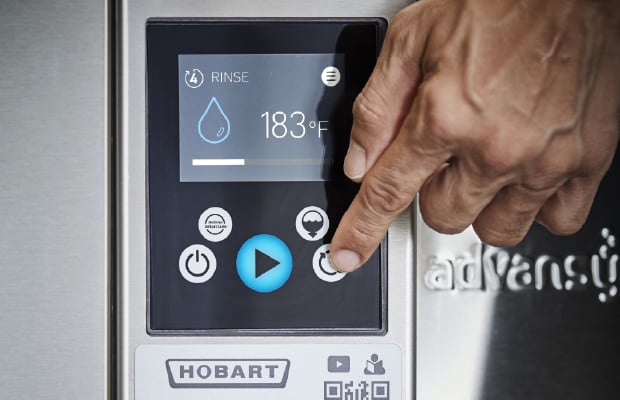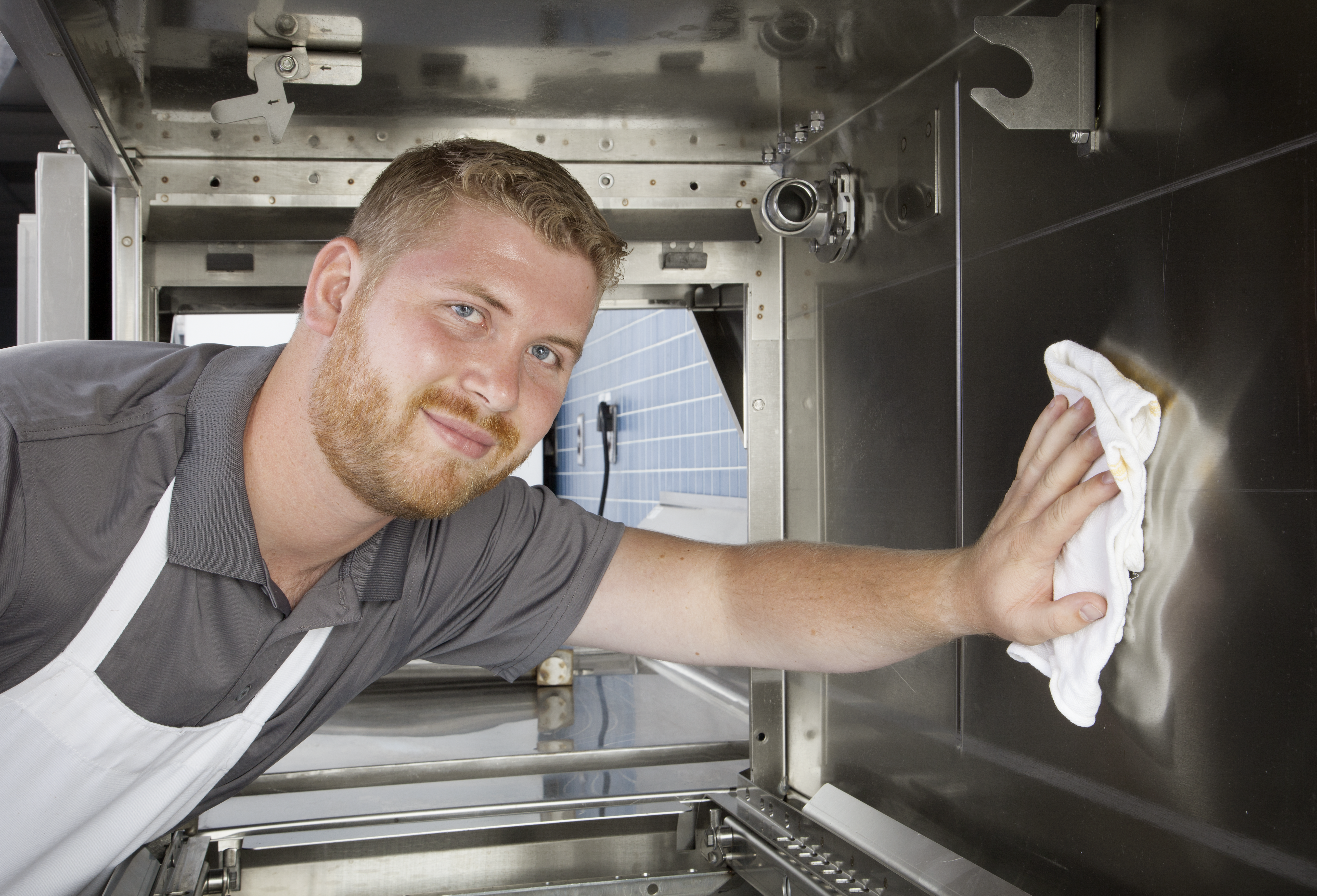Getting the best return on your investment in equipment is a goal of every operator, especially with a purchase as substantial as a commercial dishwasher. What if you could access information such as water use, cycle counts, and wash and rinse temperatures right from your tablet, analyzing data with the touch of a button? With Hobart’s connected commercial dishmachines, the futuristic world of a smart kitchen has become a reality of today.
Hobart’s dishmachines not only monitor a wide range of data points on a continuous basis, they also have the ability to connect to a variety of IoT (Internet of Things) portals. This allows operators the ability to track and analyze data in ways that can help improve productivity, efficiency, and work flow in the dishroom, making a big impact on your bottom line.
Some of the data points monitored on Hobart’s commercial dishwashers include:
- Number of cycles run
- Water temperature (wash and rinse)
- Amount of energy consumed
- Volume of water consumed
- Chemical and detergent usage
- Sanitization status
Making the Data Work for You
“Connectivity itself isn’t a solution, it’s what is done with that information that’s the key to improved operations,” says Jay Fiske, vice president of business development, Powerhouse Dynamics. Hobart has partnered with a number of IoT portal providers, including Site Sage from Powerhouse Dynamics, GridPoint and Kitchen Brains®, to provide customers with the analytical tools needed to take the data collected on Hobart dishmachines and use it to improve dishroom operations and procedures. “It’s important to convert raw data into actionable information. This enables operators to visualize energy consumption data alongside Hobart dishmachine data in order to identify issues and process improvement opportunities. This adds significant value for customers,” says Deepak Budhiraja, senior vice president of products and marketing, GridPoint.
- Manage & Lower Operating Costs. Real time monitoring of water and energy use allows operators to find issues quickly and manage consumption for actual cost savings. “We’ve seen operators achieve energy savings of 10-20 percent by managing consumption through SiteSage,” Fiske says. This can come from such things as spotting a mechanical issue before it would be spotted by the operator, such as a booster heater not working at full efficiency; or, using data to improve employee practices in the dishroom.
- Optimize Dishmachine Performance. With the ability to access dishmachine information remotely, some service calls on connected equipment can be completed without needing a technician to come on-site, saving time and money. The log of data also provides service technicians with valuable information, which can provide quick diagnosis and repair.
- Encourage Employee Best Practices. The ability to monitor energy consumption and dishmachine use can also help operators improve behaviors and procedures in the dishroom. “We work with one chain operator who had a location using a lot more water through its dishmachine than the other locations,” Fiske says. “Upon investigation, it turned out that location was running the dishmachine every time a few dishes were dirty, even running it when one spoon fell on the floor.” Having this information meant the operator could train employees and improve efficiency. “Insights like that allow you to solve business problems and improve productivity almost instantly, whereas it might not have shown up for a couple of months with a high water bill without the monitoring,” Fiske says.
- Improve Monitoring of Food Safety Protocols. Now more than ever it’s important to be able to assure your customers that dishes and utensils are clean and sanitized. The access to this type of data makes compliance with HAACP and food safety protocols even easier and more transparent than relying on handwritten logs. “The ability to access operational data can validate dish sanitation and food safety measures, and the real-time connectivity provides access to triage issues remotely as they arise,” Budhiraja says.
Getting Connected is Easy
Hobart dishmachines are compatible with a number of different IoT portals, including SiteSage® from Powerhouse Dynamics™, GridPoint Energy Manager from GridPoint and Kitchen Brains 360™ from Kitchen Brains®. Each of these platforms provides tools to collect and analyze data, customized for your specific operations. You can even connect other equipment in your kitchen through the same platform, monitoring energy use of combi-ovens and fryers along with your dishmachine.
Each platform provides a gateway unit and will provide a service call for set up and training.





.png)


%20proc%20%20(1).jpg)


